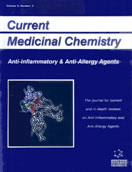Abstract
The prevalence of allergic diseases has increased dramatically in the past 30 years. Inflammation, characterized by accumulation of eosinophils and T cells, and mast cell degranulation, plays a critical role in the pathogenesis of these diseases. Chemokines and their receptors are important in the control of leukocyte migration and are potential targets for therapeutic intervention. A large body of literature documents the increased presence of various chemokines and chemokine receptors in tissue samples collected from patients with allergic diseases, but the role of individual chemokines and chemokine receptors in the pathogenesis of allergic inflammation is often uncertain. Some progress has been made through the use of animal models of allergic disease, in which chemokines or chemokine receptors can be selective blocked with specific antibodies or genetically deleted. This review discusses the immunopathology of allergic inflammation in asthma, allergic rhinitis and atopic dermatitis in human pati ents and in mouse models of allergic inflammation of the airway and skin. The role of chemokine receptors and their ligands is reviewed by comparing the expression of these molecules in human tissue samples and animal models, and by a discussion of the effect of selective manipulation of chemokines and chemokine receptors in animal models. Human and mouse studies corroborate a critical role for CCR3 and its ligands in allergic inflammation, in particular in the infiltration of eosinophils. The role of chemokines and chemokine receptors in the accumulation of T cells and the migration and activation of mast cells is less clear and the delineation of their role may depend on the development and use of improved mouse models of chronic allergic inflammation.
Keywords: chemokines, leukocyte migration, eosinophils, immunopathology
 2
2

